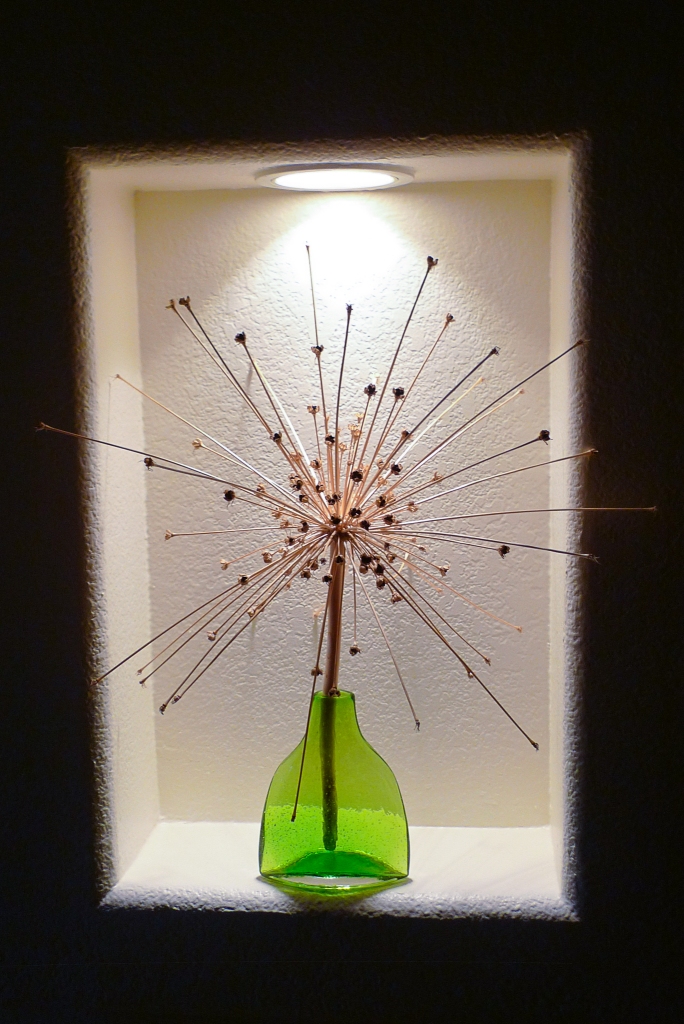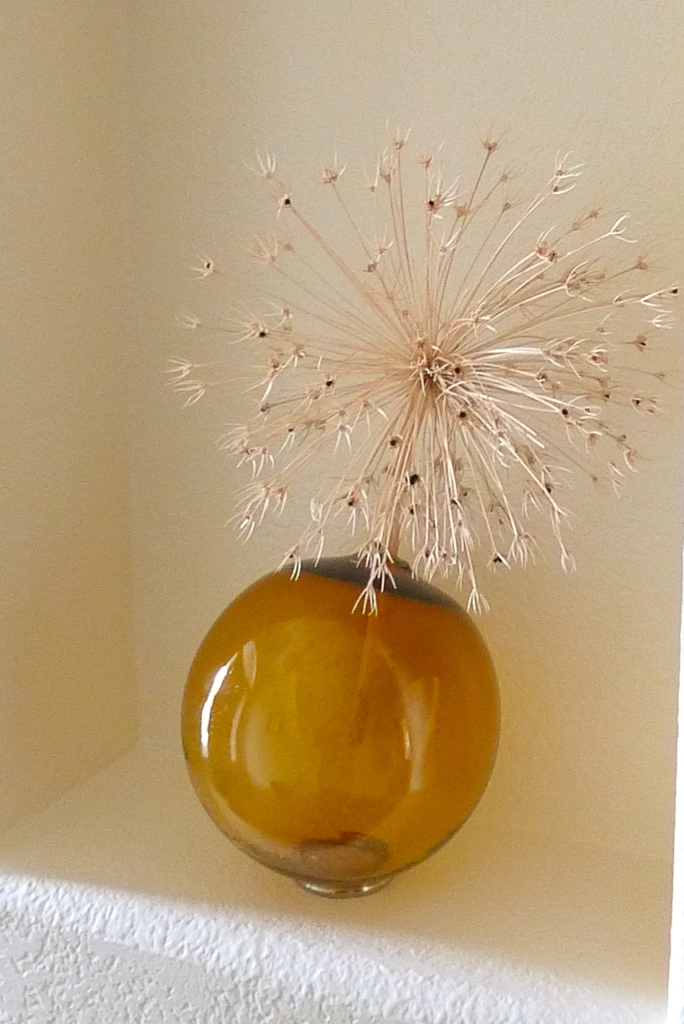
September and October are prime months for planting spring-blooming bulbs and summer-blooming poppy seeds in Colorado. With this in mind, you may want to consider installing bulbs and poppies that produce not only stunning flowers, but also decorative seedheads. That way, you can bring the seedheads inside and enjoy them during fall and winter.
Some of my favorite plants for their showy dried seedheads:
Ornamental onions, including Allium schubertii, A. ‘Globemaster,’ and A. aflatunense ‘Purple Sensation.’ All of these varieties are sun-loving and drought-tolerant. Globemaster is sterile, whereas schubertii and purple sensation are spreaders.
Allium schubertii is a rose-purple show-stopper with dramatic spikes, resembling a Star Wars character. This easy-to-grow plant blooms in late spring and reaches about two feet high, which includes its 14-inch-wide seedhead. I wonder what it would look like with holiday lights on it. Too much? Maybe.
Allium ‘Globemaster’ is a lavender beauty that grows about 18 to 30 inches high and 12 to 18 inches wide, and will tolerate part shade.

Allium aflatunense ‘Purple Sensation’ generates bright purple blooms and grows about two feet high by eight inches wide. Its seedhead is particularly attractive right after blooming because the ripening seeds are deep green.
Certain varieties of Papaver somniferum, such as Hungarian breadseed poppies and Lauren’s grape breadseed poppy.
Hungarian breadseed poppies come in a variety of remarkable colors, including pink, purple, blue, and white. The seeds can be used for breads, cakes, muffins and other baked goods.
Their large rounded seedheads display an attractive flat rosette at the top.
Lauren’s grape breadseed poppy, name for Fort Collins garden designer Lauren Springer Ogden, produces four-inch velvety, deep purple blooms and grows about three feet high.
Poppies bloom in the summer and self-sow freely if you let them, so be prepared for an influx.
After you’ve enjoyed all these plants during the growing season, display the seed heads around your house, such as on a fireplace mantel, table, or dresser.

